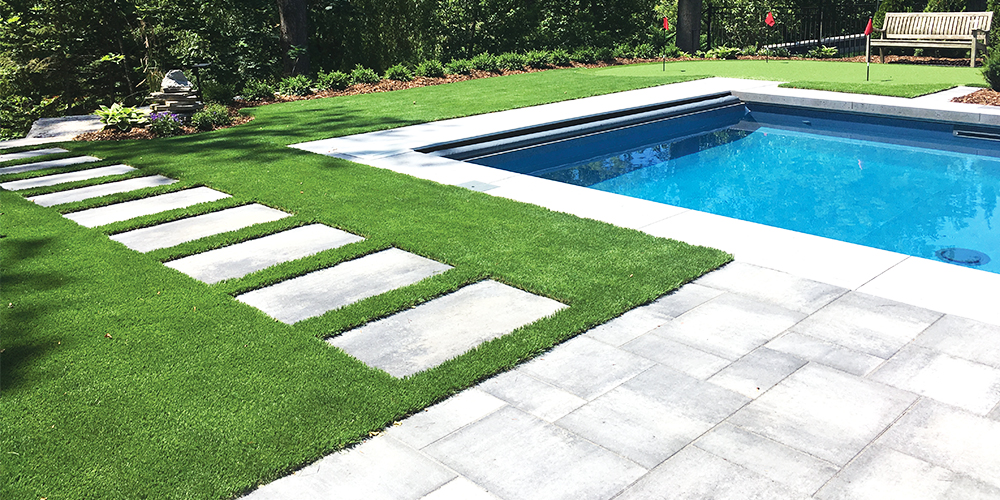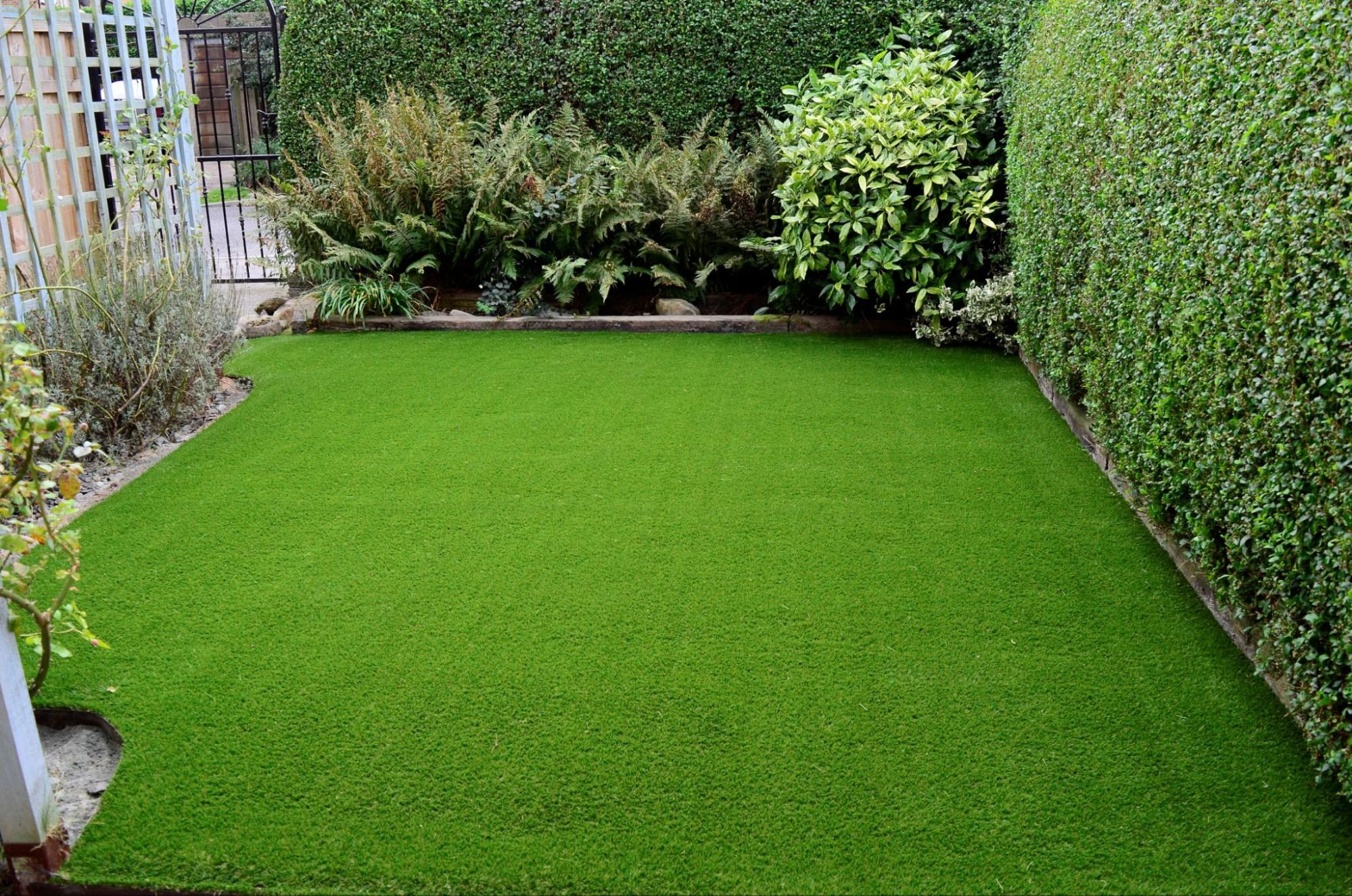Look Into the Environmental Benefits of Opting for Artificial Lawn Solutions
The fostering of synthetic grass remedies offers a compelling chance to attend to pressing ecological challenges. By considerably decreasing water usage and lessening the application of hazardous chemicals, these alternatives not just advertise sustainable landscaping however also secure neighborhood ecosystems. The reduced carbon footprint linked with reduced upkeep activities contributes to a much more sustainable strategy to land administration. The implications of these advantages expand beyond simple preservation efforts, increasing inquiries concerning their long-lasting influence on environment conservation and overall environmental equilibrium. Discovering these dimensions exposes a complex interaction worth thinking about.
Water Conservation Perks
Among one of the most substantial advantages of man-made grass is its capability to preserve water. Traditional turf lawns require considerable watering, particularly in areas prone to drought or water constraints. On the other hand, synthetic grass does not need watering, significantly minimizing the general demand for water sources. This function is especially beneficial in dry areas where water shortage is a pressing worry.
By getting rid of the demand for routine watering, synthetic grass adds to lasting landscape practices and aids mitigate the ecological influence of excessive water intake. Additionally, the conservation of water includes the decrease of overflow, which can bring about soil erosion and river air pollution.
In addition, the installation of man-made lawn permits municipalities and property owners to allot water sources more efficiently, concentrating on vital usages such as alcohol consumption water and farming. The change in the direction of fabricated lawn not just advertises liable water usage however also straightens with broader ecological goals focused on preserving natural deposits.
As areas increasingly prioritize sustainability, the water preservation advantages of synthetic grass provide a compelling case for its fostering in property and industrial landscape design tasks.
Lowered Chemical Use
The transition to artificial lawn dramatically reduces the reliance on chemical therapies frequently utilized in natural yard upkeep. Conventional lawn monitoring generally entails the application of pesticides, herbicides, and plant foods to promote development and control insects. These chemicals can pose dangers to human health, neighborhood wildlife, and the atmosphere, adding to soil and water contamination.
In contrast, synthetic turf gets rid of the requirement for these damaging compounds. By decreasing the launch of synthetic compounds into the community, man-made lawn advertises much healthier dirt and water systems.
Moreover, the absence of chemical runoff associated with synthetic grass setups assists shield neighborhood waterways from air pollution, sustaining marine life and maintaining biodiversity. Artificial turf companies phoenix. As areas progressively focus on lasting methods, choosing for artificial lawn offers a practical service that aligns with environmental preservation objectives. With this shift, homeowner can take pleasure in rich eco-friendly spaces without jeopardizing environmental health and wellness, paving the means for an extra sustainable future
Lower Carbon Impact

Moreover, the installation of fabricated grass can cause substantial water preservation. Natural grass require considerable amounts of water for watering, which not just includes in the carbon footprint Read More Here connected with water extraction and treatment but also pressures neighborhood water sources. In comparison, synthetic grass requires very little upkeep, requiring no watering, consequently significantly decreasing water use and its linked power costs.
Furthermore, the longevity of man-made lawn adds to its lower carbon impact. With a lifespan of as much as 15 years or more, the need for constant substitutes is lessened, causing much less waste and lower energy consumption in manufacturing and throwing away conventional turf alternatives. Generally, synthetic turf presents a sustainable choice for eco aware landscaping.
Environment Conservation
Environment conservation is an important factor to consider in the dispute over landscaping choices, especially when comparing synthetic turf to all-natural yard. Natural turf lawns often call for considerable upkeep, including making use of herbicides, plant foods, and chemicals, which can negatively affect go to this site local ecological communities. These chemicals can seep right into the dirt and waterways, damaging native plants and fauna and disrupting neighborhood habitats.
In comparison, man-made turf provides an opportunity to lower the ecological impact of landscaping. By choosing synthetic lawn, property owners can decrease the interruption of all-natural habitats related to typical lawn treatment techniques. Synthetic lawn eliminates the requirement for harmful chemicals, consequently protecting close-by wild animals and keeping the integrity of surrounding environments. Moreover, the installation of man-made lawn can result in the conversion of former yard locations right into more biodiverse landscapes, such as pollinator gardens or native plant areas, which can support regional wild animals.
Eventually, the shift to synthetic grass not only conserves water and reduces upkeep initiatives yet likewise promotes a more unified partnership between human activities and the native environment, advertising habitat conservation while doing so.
Long-Term Sustainability
Long-lasting sustainability is a vital consider assessing the benefits of man-made grass over traditional yard lawns. Among one of the most significant advantages of man-made turf is its longevity; it can last as much as 15-20 years with marginal maintenance, whereas all-natural turf calls for frequent reseeding and replacement. This longevity reduces the demand for consistent sources, such as water, fertilizers, and chemicals, which are crucial for preserving a healthy and balanced grass look at this site yard.
Additionally, synthetic grass adds to a reduction in carbon discharges related to yard treatment equipment. Typical lawns usually need gas-powered lawn mowers, leaners, and blowers, all of which add to air pollution. Arizona turf. On the other hand, fabricated grass removes the need for such devices, advertising a cleaner environment
Furthermore, the manufacturing of fabricated grass increasingly utilizes recycled materials, improving its sustainability account. As makers embrace environmentally friendly methods, the ecological impact of synthetic grass continues to reduce.

Final Thought
The fostering of fabricated lawn solutions presents significant environmental advantages, consisting of significant water preservation, lowered dependence on hazardous chemicals, and a lower carbon footprint. Artificial lawn help in protecting natural environments by decreasing land disruption and promoting lasting sustainability through the usage of long lasting materials. Collectively, these variables emphasize the capacity of synthetic grass to add positively to ecological wellness and provide a practical choice to standard landscaping techniques in a significantly resource-conscious world.
In comparison, man-made turf does not need watering, considerably minimizing the total need for water sources. By lessening the release of artificial compounds right into the ecological community, fabricated grass promotes much healthier soil and water systems.
Furthermore, the installment of synthetic lawn can result in significant water conservation. In comparison, synthetic lawn needs marginal maintenance, calling for no watering, thus dramatically reducing water usage and its associated power prices.
